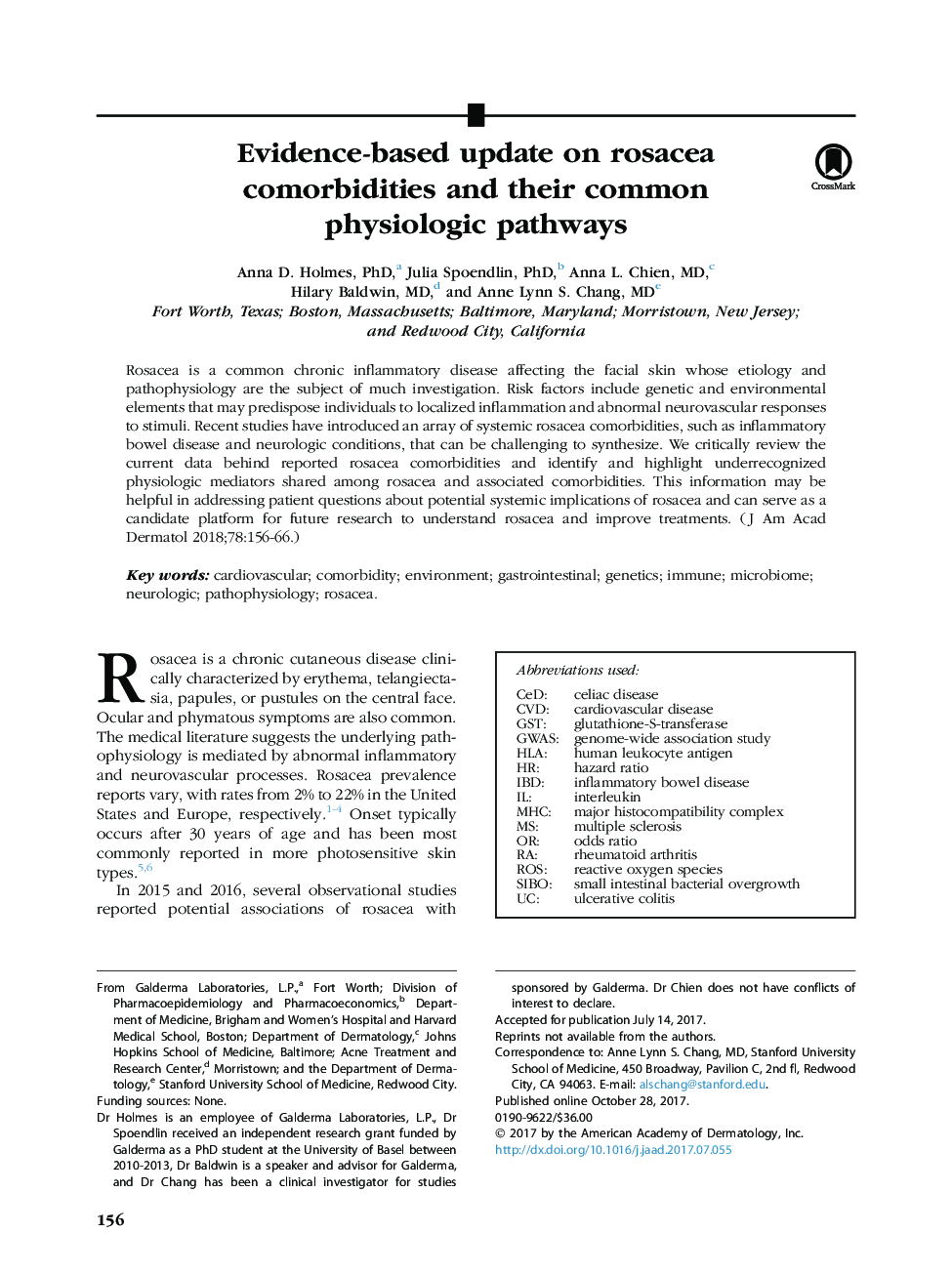| Article ID | Journal | Published Year | Pages | File Type |
|---|---|---|---|---|
| 8715415 | Journal of the American Academy of Dermatology | 2018 | 11 Pages |
Abstract
Rosacea is a common chronic inflammatory disease affecting the facial skin whose etiology and pathophysiology are the subject of much investigation. Risk factors include genetic and environmental elements that may predispose individuals to localized inflammation and abnormal neurovascular responses to stimuli. Recent studies have introduced an array of systemic rosacea comorbidities, such as inflammatory bowel disease and neurologic conditions, that can be challenging to synthesize. We critically review the current data behind reported rosacea comorbidities and identify and highlight underrecognized physiologic mediators shared among rosacea and associated comorbidities. This information may be helpful in addressing patient questions about potential systemic implications of rosacea and can serve as a candidate platform for future research to understand rosacea and improve treatments.
Keywords
SIBOCEDIBDGSTROSRheumatoid arthritisHuman leukocyte antigenHLAImmuneinterleukinsmall intestinal bacterial overgrowthCeliac diseasecardiovascular diseaseInflammatory bowel diseaseGastrointestinalrosaceaCVDcardiovascularMHCmajor histocompatibility complexEnvironmentGenome-wide association studyGWASMultiple sclerosisMicrobiomehazard ratioodds ratioNeurologicComorbidityPathophysiologyGeneticsUlcerative colitisglutathione-S-transferaseReactive oxygen species
Related Topics
Health Sciences
Medicine and Dentistry
Dermatology
Authors
Anna D. PhD, Julia PhD, Anna L. MD, Hilary MD, Anne Lynn S. MD,
